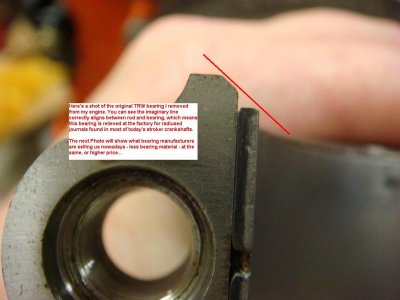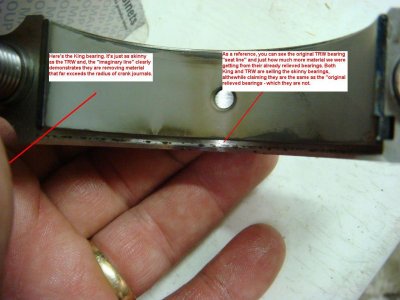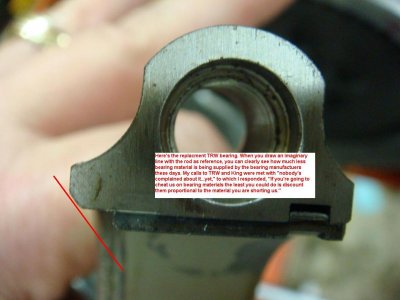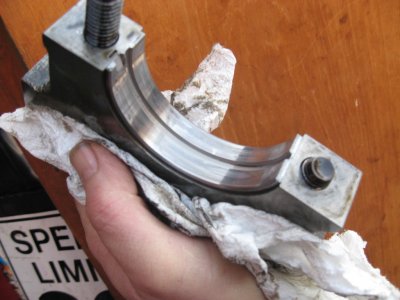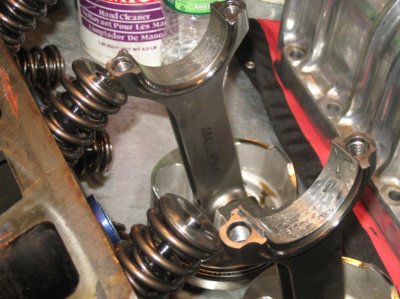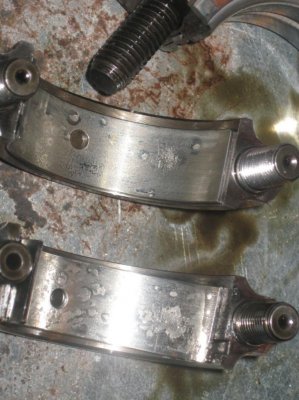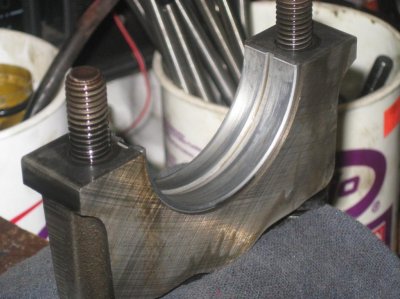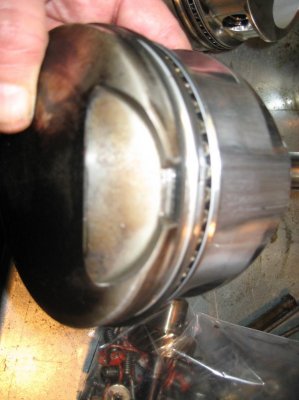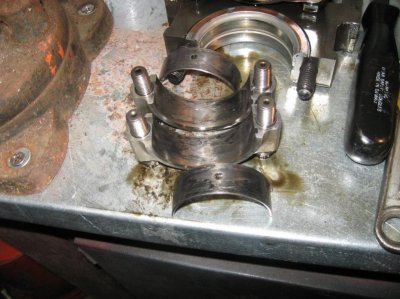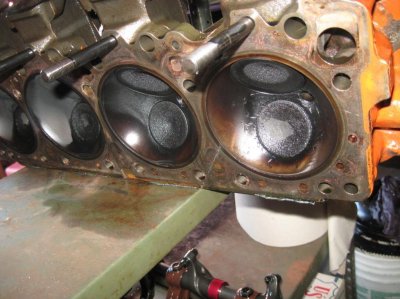Southernman
Well-Known Member
While going through my engine (big inch Hemi), I noticed a significant difference in the width of the new rod bearings when compared to the ones I removed.
The first set I tried was from King Bearings, and they were .030 narrower than the old TRW's that I removed, and the TRW's were already "undercut" for radiused journals.
I called King bearings and they claimed they've only narrowed the bearing for clearance at the journal radius, however, when I explained I had just removed TRW's that were also relieved, yet the King bearing was .030-.040 narrow than that, they changed their tune and stated, OK, but nobody has complained about it yet...
Pissed off, I order new TRW's from Mancini, and the bearing width was same as the Kings. Got the same song and dance from an engineer at TRW, claiming they were only narrowed enough to clear the radius on the crank pin and instructed me to draw an "imaginary" line along from the radius on the rod, and I would see the material removed "amounts to radiused material that was not used anyway." What a crock.
I've included some pics to make my point. Bearings being sold nowadays are being whittled down (much like food suppliers are doing with their products) and, because nobody is complaining, I suspect they will continue to "short" us on materials until "customers complain."
Anybody else observed this lately ?
The first set I tried was from King Bearings, and they were .030 narrower than the old TRW's that I removed, and the TRW's were already "undercut" for radiused journals.
I called King bearings and they claimed they've only narrowed the bearing for clearance at the journal radius, however, when I explained I had just removed TRW's that were also relieved, yet the King bearing was .030-.040 narrow than that, they changed their tune and stated, OK, but nobody has complained about it yet...
Pissed off, I order new TRW's from Mancini, and the bearing width was same as the Kings. Got the same song and dance from an engineer at TRW, claiming they were only narrowed enough to clear the radius on the crank pin and instructed me to draw an "imaginary" line along from the radius on the rod, and I would see the material removed "amounts to radiused material that was not used anyway." What a crock.
I've included some pics to make my point. Bearings being sold nowadays are being whittled down (much like food suppliers are doing with their products) and, because nobody is complaining, I suspect they will continue to "short" us on materials until "customers complain."
Anybody else observed this lately ?

